VIETNAM
Hanoi

Hanoi
Hanoi
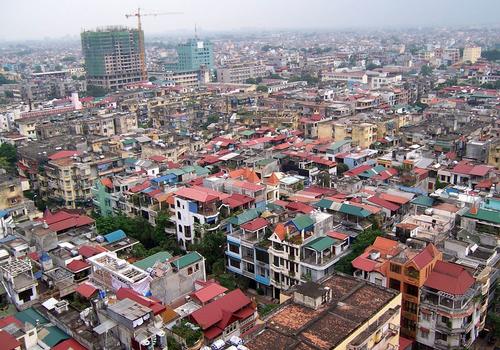 HanoiPhoto: Public Domain
HanoiPhoto: Public Domain
Hanoi is the capital of Vietnam and the country's second largest city. According to the 2009 census, the metropolitan area has an estimated population of nearly 6.5 million, the urban area has 2.6 million inhabitants.
From 1010 to 1802, Hanoi was Vietnam's most important political center. The city was the capital of French Indochina 1902/54. From 1954 to 1976, it was the capital of North Vietnam. In October 2010, the city officially celebrated its 1000th anniversary. Hanoi was named one of the world's "Top Destinations in 2010" on that occasion.
Hanoi's Old Quarter is the most interesting part of the Vietnamese capital. There is a busy market and you will find many hotels or guesthouses and countless coffee shops, cafes and restaurants. The Old Quarter is the city's star attraction and is located just north of Hoan Kiem Lake. Most captivating is the seemingly unchanged lifestyle of this old trading district, where the craftsmen still live together according to their trade, as evidenced by the names of the 'Hang' or streets.
| advertisement |
| Hotels Hanoi |
Location
The coordinates of Hanoi are 21° 2'0' North latitude and 105° 51'100' East longitude.
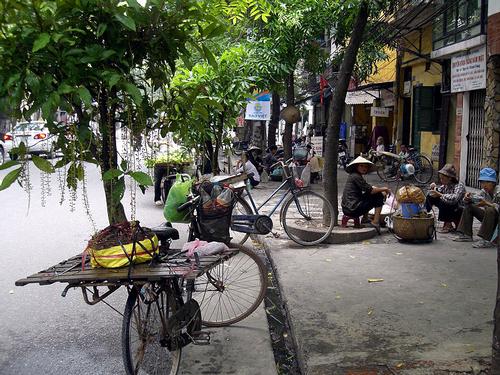 Hanoi Street life in the old quarterPhoto: Maryam Laura Moazedi CC 3.0 no changes made
Hanoi Street life in the old quarterPhoto: Maryam Laura Moazedi CC 3.0 no changes made
The city is located on the right bank of the Red River, 1,760 km north of Ho Chi Minh City. Hanoi is divided into 10 districts. The old district still has the original street pattern and the associated architecture. At the beginning of the 20th century, the city consisted of only 36 streets, which are now part of the old center. These picturesque streets were lined with small shops of craftsmen and merchants of silk, jewelry and other merchandise.
Weather
Hanoi has a warm, humid subtropical climate with abundant rainfall. The city has the typical climate of northern Vietnam, with hot and humid summers and relatively cool and dry winters. Summer lasts from May to September, with the majority of the average annual rainfall of 1,680 mm. rainfall per year.
History
Hanoi has been inhabited since at least 3000 BC. One of the first known permanent settlements is the Co Loa citadel founded around 200 BC.
Hanoi became the capital of Vietnam in the 7th century. In 1408, the Ming Chinese occupied Vietnam. Hanoi is given the name "eastern gateway". In the 11th century, the city was called Thang Long. In 1428, the Vietnamese regained power under the leadership of Le I, the later founder of the Le Dynasty. Hanoi was then known as "Eastern Capital" or Tonkin.
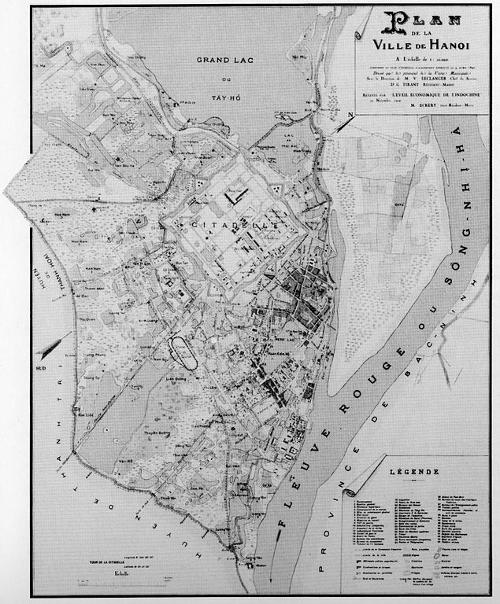 Map Hanoi around 1890Photo: Public domain
Map Hanoi around 1890Photo: Public domain
Hanoi was occupied by the French in 1873 and became the capital of French Indochina from 1887. In 1940, the city was occupied by the Japanese and liberated in 1945. Hanoi became the seat of the Viet Minh government after Ho Chi Minh declared independence. In 1946 the French returned and occupied the city again. After nine years of fighting between the French and the Viet Minh, Hanoi became the capital of an independent North Vietnam in 1954.
During the Vietnam War, Hanoi was heavily bombed and especially the infrastructure such as bridges and railway lines suffered badly. When North and South Vietnam were reunited on July 2, 1976, Hanoi became the capital of reunited Vietnam.
Sights
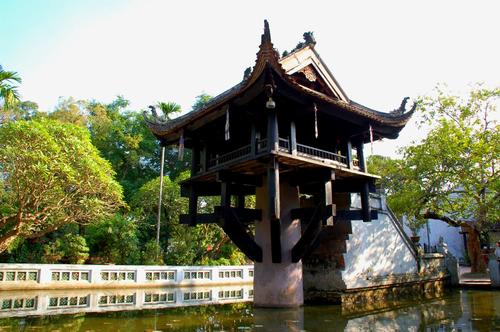 One pillar Pagode in HanoiPhoto: Ruud CC 2.0 Generic no changes made
One pillar Pagode in HanoiPhoto: Ruud CC 2.0 Generic no changes made
Hanoi is one of Vietnam's most important cultural centers and its capital for over a thousand years. Numerous Vietnamese dynasties and other rulers have left their mark in this city. Although many of the beautiful historical structures have not been preserved, the city still has many interesting cultural and historical monuments and is attractive to visitors and residents. In the 19th century after the French gained control of the city in 1888, they modeled the architecture according to their tastes. Hanoi has more cultural attractions than any other city in Vietnam.
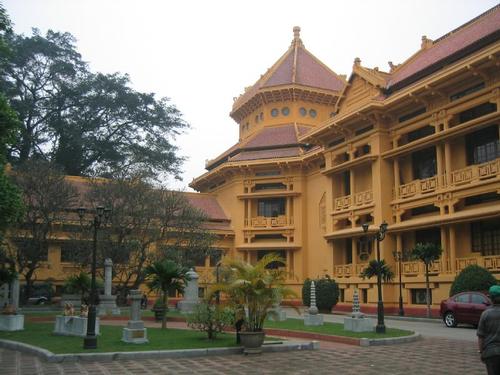 Museum if National history in HanoiPhoto: Chuoibk in the public domain
Museum if National history in HanoiPhoto: Chuoibk in the public domain
French colonial architecture was dominant during French rule, when Hanoi was the administrative center of the French colony of Indochina. Some fine examples of this architecture are well preserved: the tree-lined boulevards (Phan Dinh Phung street) and the beautiful villas and mansions, the opera house, the state bank of Vietnam (formerly the Bank of Indochina), the presidential palace (formerly the Palace of the Governor General of French Indochina), St. Joseph's Cathedral and the historic Hotel Metropole. Many of the colonial structures were built in a mix of French and traditional Vietnamese architectural styles, such as the National Museum of Vietnamese History, the National Museum of Fine Arts of Vietnam, and the old medical school building.
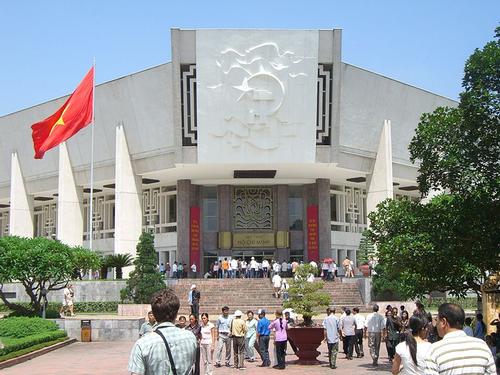 Ho chi Min museum in HanoiPhoto: Aaron CC 2.0 Unported no changes made
Ho chi Min museum in HanoiPhoto: Aaron CC 2.0 Unported no changes made
A number of museums have exhibited extensive collections of art and artifacts. Other than the two previously mentioned museums are of interest: the Vietnamese Museum of Ethnology, the Vietnamese Museum of the Revolution, the Ho Chi Minh Museum and the Center for Contemporary Art. The Hanoi Museum is currently under construction. The number of art galleries featuring Vietnamese art has increased in recent years.
Tips
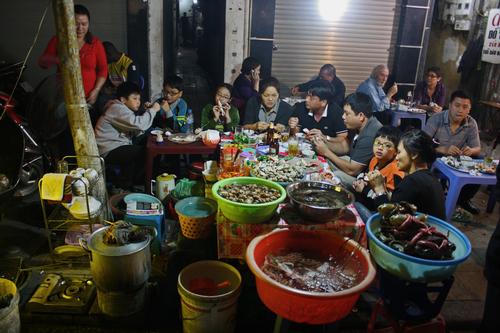 Hanoi Street foodPhoto: Istolethetv (CC BY 2.0) no changes made
Hanoi Street foodPhoto: Istolethetv (CC BY 2.0) no changes made
Hanoi is a very lively city with various possibilities to enjoy yourself. Modern and traditional theaters, cinemas, karaoke bars, dance clubs, bowling alleys and an abundance of shopping options cater to locals and tourists alike. On a culinary level, you can order the most delicious meals very cheaply. The local specialties, the spicy dishes are certainly appreciated by enthusiasts. Some specialties are soup with noodles (pho) and chicken (ga) or beef (bo) flavored with all kinds of spices. Rice noodles with fish and crab (banh canh) is a very popular dish.
Useful links Hanoi
BBC Country ProfilesWorld Fact Book Explore all Countries
How to call
Last updated May 2025
Copyright: Team - The World of Info